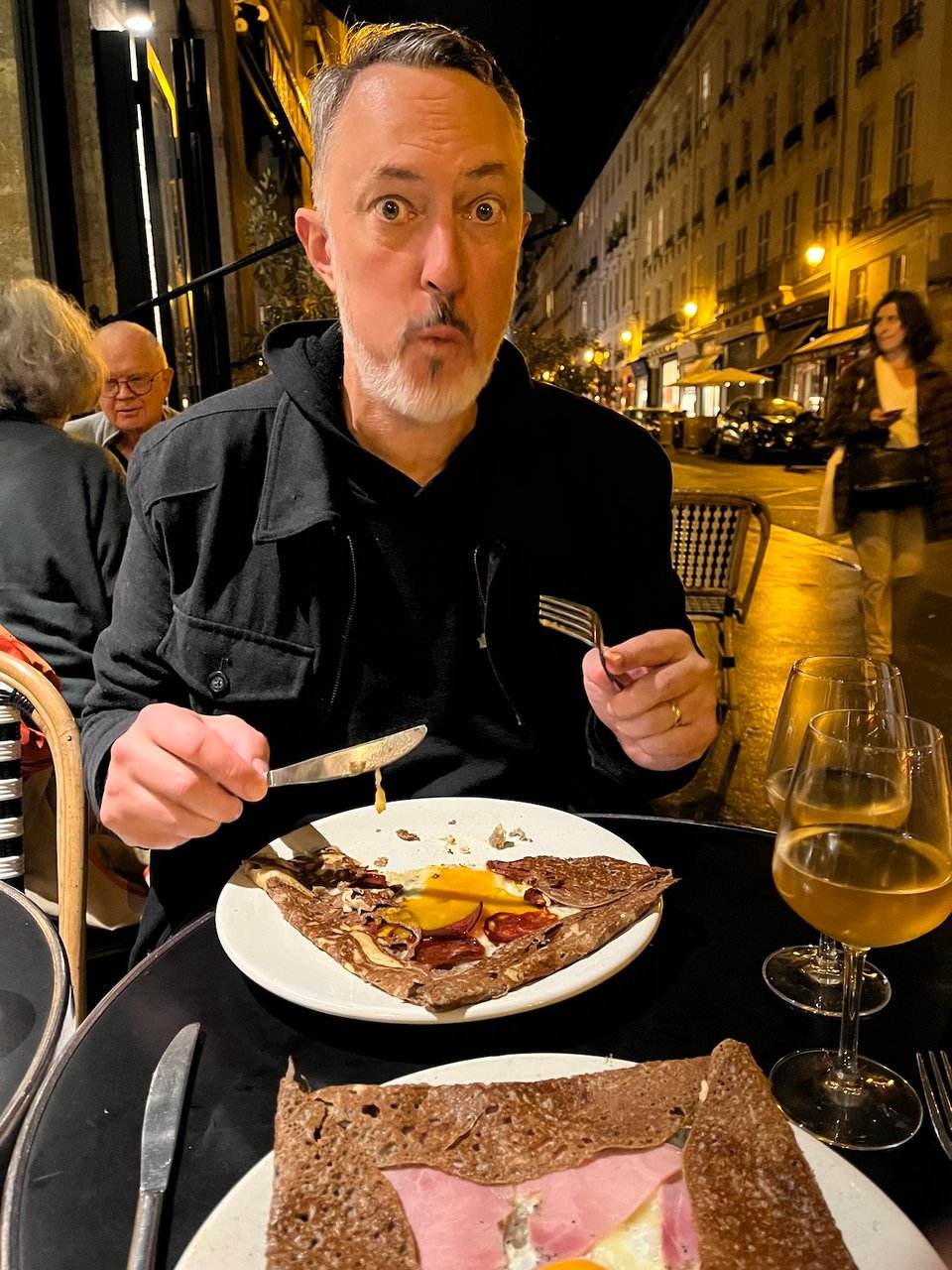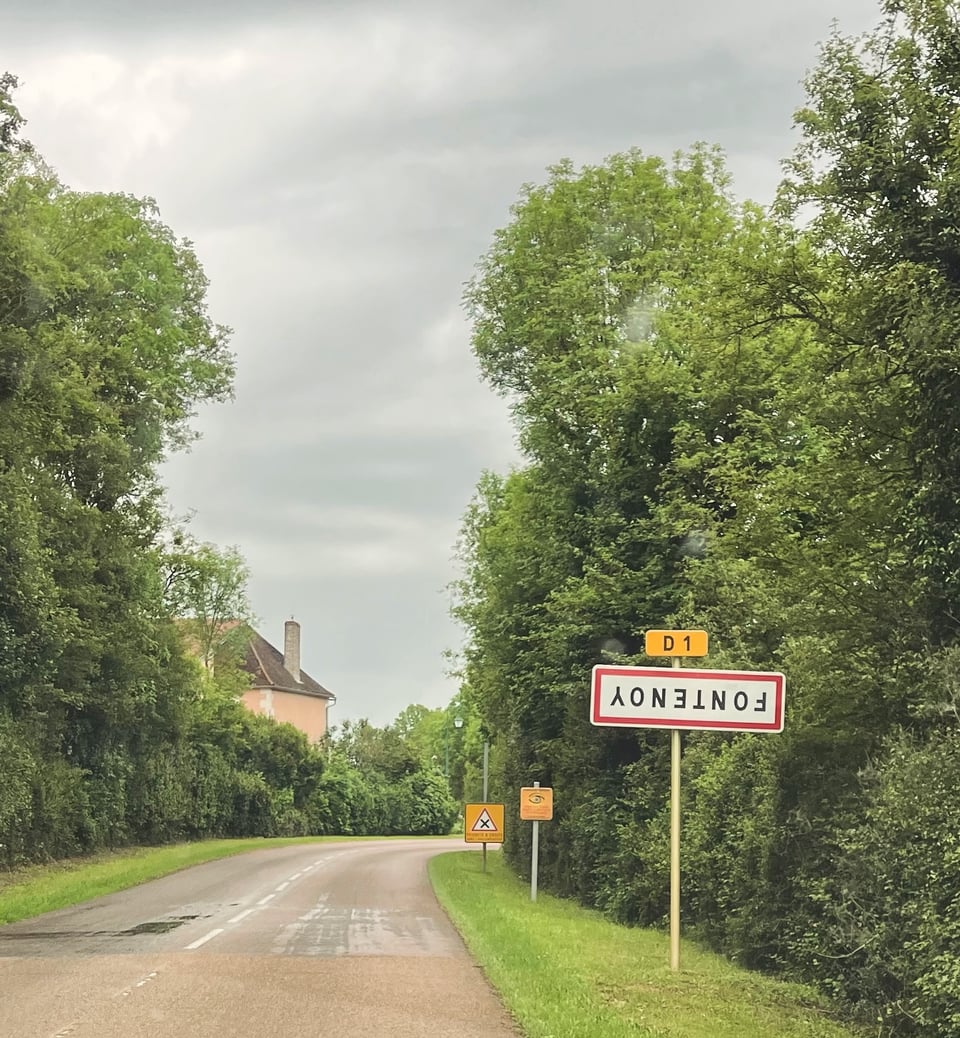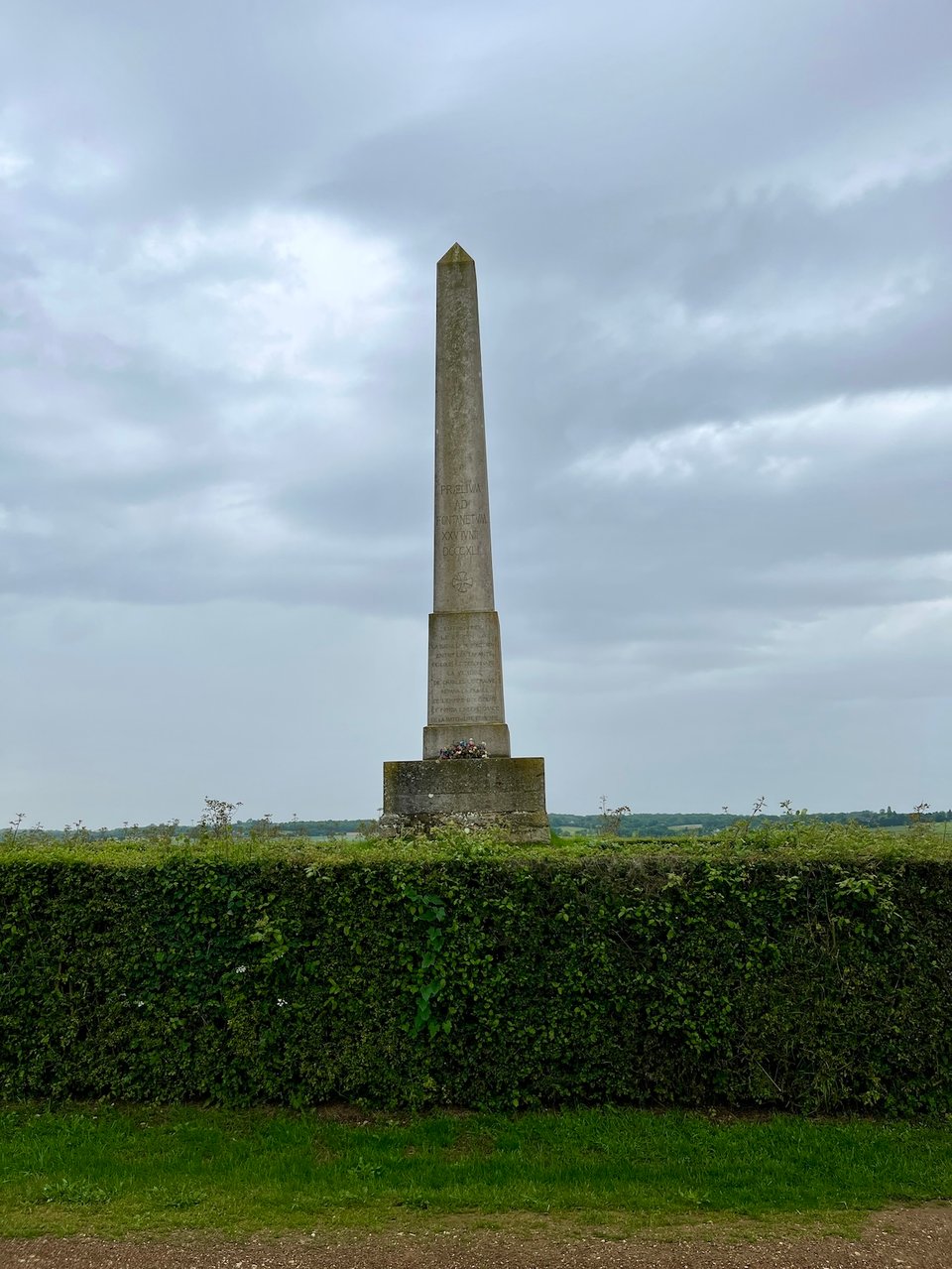Fontenoy
A monument and memory of a great medieval battle

Modern Medieval
by David M. Perry and Matthew Gabriele
It’s been a busy month for us. We’ve sent in the draft of our new book (out in December!), got to see the cool cover that Harper Books has made for us, worked through copyedits of said book, and then (of course) also did all the other stuff in our lives.
One of those “other stuff” things Matt did was take a quick trip through France and Italy for his anniversary, including a jaunt to Fontenoy, the site of the battle that broke the Carolingian Empire.
The trip was wonderful, spending time primarily in Italy, including the spectacular medieval sites of Sicily. France was a quick hit, but, not only for the delicious crepes and cider I (Matt) was able to get.

The bigger reason for the trip was a day excursion out to Auxerre, on the Yonne River, and about 100 miles southeast of Paris. Auxerre itself is lovely, with a towering cathedral dating to the High Middle Ages and a still-standing monastery (St-Germain of Auxerre), filled with 9th-century mosaics and 11th-century frescoes, that was an intellectual center throughout the 9th and 10th centuries.
But that wasn’t the end of this excursion. From Auxerre, I rented a car and drove through the lovely, lightly-hilled countryside a further 18 miles to the southwest to arrive at a little village of Fontenoy (in Burgundy).

If you’ve been following us for a while, you’ll know that David and I are writing about a civil war in early medieval Europe, fought amongst three grandsons of Charlemagne (died 814), also the sons of the Emperor Louis the Pious (died 840). The story we’re telling revolves around one day in June 841, when those 3 brothers and their nephew, each at the head of large armies, met in battle just to the south of this very village of Fontenoy.
It’s a very quiet village now - just a late medieval church, a few houses, a restaurant, and very small museum dedicated to the battle (though only open in July/ August). But on that fateful date in the 9th century, this was a site of horror.
As one participant wrote afterwards:
O what grief and wailing! The dead lie there naked While vultures, crows, and wolves savagely devour their flesh. They shake since they lack graves and their corpses lie there to no end... Let not that accursed day be counted in the calendar of the year, Rather let it be erased from all memory, May the sun’s rays never fall there, may no dawn ever come to [end its endless] twilight.
The shock and horror - literally using the Latin verb horreo, from which we get the word “horror” - of the battle shattered an empire. The men who slaughtered each other on a field full of wildflowers had been friends and rivals at court, had fought side-by-side on expeditions across Europe, but now brothers literally fought brothers, uncles fought nephews, fathers fought sons.
But we’ll save the rest of that story for… December. But you could preorder today!
For now let me return to the present. If you drive south out of the village, the only road there gently (but quickly) climbs to a wide, low plateau that crests and extends for a few miles. Just as you reach the that plateau, not more than a couple of minutes’ drive, a stone obelisk greets you just to the right.


Erected in 1860, the obelisk now sits quietly. Lonely. We saw maybe 2 cars pass by in the 30 minutes or so we were there.
Standing closer, you can see the 2 inscriptions - one brief in Latin, the other longer in French. The Latin, at the top, simply says “The Battle of Fontenoy, 25 June 841.” Underneath, in French, it reads “Here, on 25 June 841, the Battle of Fontenoy was fought between the children of Louis the Pious. The victory of Charles the Bald separated France from the Western Empire, and founded the independence of the French nationality” (French: et fonda l'indépendance de la nationalité française).
This isn’t what happened - not really. The battle began a process that would eventually separate west Francia from east Francia, but dreams of empire remained, and certainly no one at the time thought that separation - even when it came more than 2 years later - would be permanent.
But monuments attempt to cement a particular understanding of the past into the popular consciousness. They seek to eliminate debate, to paper over the messiness of history, and the choices that people made in the past that could have turned out differently. The erection of monuments is about creating a moral consensus of interpretation, a place where people who visit “remember” the memories of other people.
In 1851, Louis-Napoleon Bonaparte refused to step down from the presidency of France and dissolved the National Assembly with the help of the army. This new dictator used war and nationalism to cement his power into place, one echoed in this monument.
In a speech related to the obelisk’s dedication in June 1860, the director of the local Auxerrois historical society explained that the battle at Fontenoy was worth commemorating because it, “so fierce and so deadly, was according to the historians, the beginning of the transformation of the Franks and their subjects in Gaul into the French nation.” But this is a 19th-century claim, not a 9th-century one.
To fight against authoritarian uses of history, we need to understand the messiness of the past, the choices that led to an event, how it could have been otherwise, how meaning is deployed afterwards to advance an agenda.
In the 9th century itself, the Franks who bled at Fontenoy, who mourned lost children afterwards knew this all too well. This was a battle of imperial pretensions, but also bloodshed driven by a white-hot grievance (perhaps) only possibly among siblings. These rulers fought, they made deals, then made other deals. Eventually, they died and their children did just the same. The magnates followed their kings under the bright, shining lies they told one another. And behind this blind adherence to despots and tyrants lay an ever-extending trail of blood, betrayals, and broken families.
An obelisk, a monument, even one largely forgotten on a slight hill in the middle of nowhere, whispers other histories to those astute enough to listen closely.
-
Predictably, I'm all about how much the residents of nearby Domremy remembered that battle. And the role of chevalerie in its conduct. Guess I'll have to wait for the book,which I've pre-ordered... L
-
Wow. You go, guys. Thanks for all you do.
-
Beautiful, that last paragraph. I always enjoy your posts. Looking forward to your new book!
thanks so much!

Add a comment: